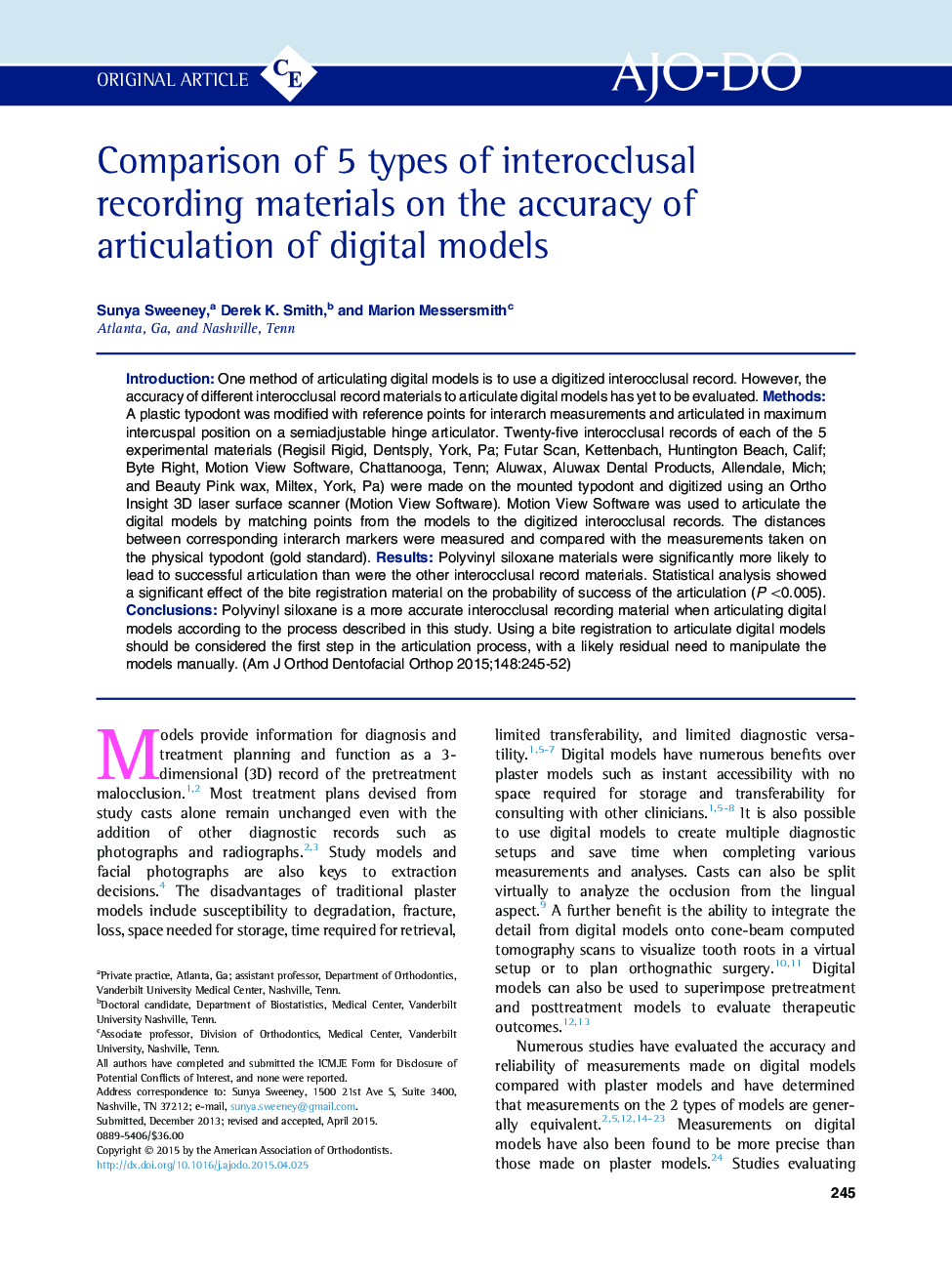| Article ID | Journal | Published Year | Pages | File Type |
|---|---|---|---|---|
| 3115606 | American Journal of Orthodontics and Dentofacial Orthopedics | 2015 | 8 Pages |
•Interocclusal records were made with 5 experimental materials and then digitized.•Digital records were articulated, and a best-fit algorithm was used to align the models.•Records made of polyvinyl siloxane performed best.•No materials performed perfectly, and manual manipulation of the models is required.
IntroductionOne method of articulating digital models is to use a digitized interocclusal record. However, the accuracy of different interocclusal record materials to articulate digital models has yet to be evaluated.MethodsA plastic typodont was modified with reference points for interarch measurements and articulated in maximum intercuspal position on a semiadjustable hinge articulator. Twenty-five interocclusal records of each of the 5 experimental materials (Regisil Rigid, Dentsply, York, Pa; Futar Scan, Kettenbach, Huntington Beach, Calif; Byte Right, Motion View Software, Chattanooga, Tenn; Aluwax, Aluwax Dental Products, Allendale, Mich; and Beauty Pink wax, Miltex, York, Pa) were made on the mounted typodont and digitized using an Ortho Insight 3D laser surface scanner (Motion View Software). Motion View Software was used to articulate the digital models by matching points from the models to the digitized interocclusal records. The distances between corresponding interarch markers were measured and compared with the measurements taken on the physical typodont (gold standard).ResultsPolyvinyl siloxane materials were significantly more likely to lead to successful articulation than were the other interocclusal record materials. Statistical analysis showed a significant effect of the bite registration material on the probability of success of the articulation (P <0.005).ConclusionsPolyvinyl siloxane is a more accurate interocclusal recording material when articulating digital models according to the process described in this study. Using a bite registration to articulate digital models should be considered the first step in the articulation process, with a likely residual need to manipulate the models manually.
